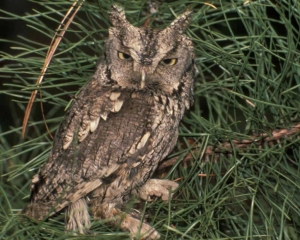
Wisconsin Wildflowers: Prairie Fleabane (Erigeron strigosus)
During hot months, prairies come alive with phenomenal displays of wildflowers and the prairie restorations of the Rotary Centennial Arboretum at Riverside Park are, right now, in full bloom. There you can find this week’s wildflower: Prairie Fleabane (Erigeron strigosus).
With flowerheads that look like small, delicate daisies, prairie fleabane is a member of Asteraceae, the asters. Asteraceae is one of the two biggest families of plants in the world along with Orchidaceae, the orchids. Which family is bigger depends on who’s counting what as a species.
CRIKT and You
It is the season of showy butterflies, buzzing cicadas, crackling grass hopper wings and CRIKT research. Nope, that is not a typo. CRIKT stands for “Citizens Researching Invertebrate Kritters Together” and this research team at the Urban Ecology Center is leading the nation in its approach to field ecological research. “Invertebrate Kritters” refers to the vast array of animals found in the insect, spider and mite categories. Because invertebrates impact people in a variety of ways: pollinating crops, decimating crops and invoking some of our greatest fears or senses of awe, they have been studied quite a bit over the years. So what sets CRIKT apart? It is WHO is involved and WHERE they work.
Wisconsin Wildflowers: Virginia Waterleaf (Hydrophyllum virginianum)
Some wildflowers grow modestly, a few delicate blossoms held a few inches off the ground. Then there are bold wildflowers like the Virginia Waterleaf (Hydrophyllum virginianum).
Waterleaf can’t wait for you to see it. Growing some two-feet tall, the waterleaf puts out showy balls of flowers. If you walk through Riverside Park on the right day in late spring, the whole park will be alive with this bushy wildflower.
Introducing a Walk of 3 Billion Years
Studying nature is a great way to feel young…comparatively speaking, that is. There are trees that are hundreds of years old as well as turtle and bird species that can easily outlive the humans who care for them. The entire human race is like a newborn when compared to billion-year-old rocks. It’s mind blowing!
Thanks to a generous gift from the Franke family, we’ve created a way to explore this concept of time through nature. We’re proud to introduce a new treasure, a 3 Billion Year Walk through the Milwaukee Rotary Centennial Arboretum.
Wisconsin Wildflowers: Wild Ginger (Asarum canadense)
If you asked someone to draw a flower, what would it look like? It would probably resemble a daisy, or maybe a tulip, right? What it wouldn’t look like is the strangely fleshy, three-pointed flower of Wild Ginger (Asarum canadense).
In that same drawing, the flower would probably be shown standing proudly erect, basking in the sunlight like the “day’s eye,” which incidentally is the origin of the word daisy. You probably wouldn’t draw a flower hidden under large leaves, slumping messily into the soil.
But wild ginger is not your typical flower. It doesn’t even have petals!
Milwaukee County Parks Exploration Complete!
Have you ever been a tourist in your own town? Taking a stay-cation or planning day trips can be a great way to gain an even deeper appreciation for the jewels we have. My suggestion? Spend some time in Milwaukee County’s vast park system. You can start at our Riverside or Washington Park branches by going on a guided tour.
My husband and I recently completed a year-long local “tourist” adventure of learning, exploration and fun.
Our Piece of the Puzzle
Have you ever tried to put a puzzle together without looking at the picture on the box? You spend a lot of time trying to figure out if the blue piece is sky or water. Without the seeing the whole picture you don’t understand how that piece fits in.
I was reminded of this idea during a recent conversation with a well-meaning and inquisitive young man who was trying to understand what the Center was all about. “Why on earth are you in the city?” he asked. “I mean, what kind of nature can you find there?”
Native Animal: Striped Skunk (Mephitis mephitis)
A potent odor in Three Bridges Park recently led us to a dead skunk lying next to the Menomonee River. It rested, amazingly intact, on a sewerage outflow pipe lightly covered in snow. Whether he was the victim of hypothermia, winter starvation or a ravenous hawk remained a mystery, but whatever the skunk’s demise, it was clear that two weeks after he had perished, his scent still lingered.
See for Yourself: Signs of Life - Habitat Restoration
Our habitat restoration efforts and research projects really go hand-in-hand. As we restore the land, we discover more and more mammals, birds, insects and amphibians using our parks. Our studies also help to determine the number of native plant species we’ve added that have “taken root” and are continuing to grow. Here are just a few highlights you can find.
Native Animal of the Month: Eastern Screech Owl
Last fall at Riverside Park, the research and community science department was hosting the Wisconsin DNR’s bat biologists for an evening of bat mist netting, when a gregarious little screech owl paid us a visit. As DNR biologist Paul White held the large group of participants enraptured with a live bat, a persistent whinny in the distance distracted those of us at the back of the group.
Copyright © 2023 The Urban Ecology Center












